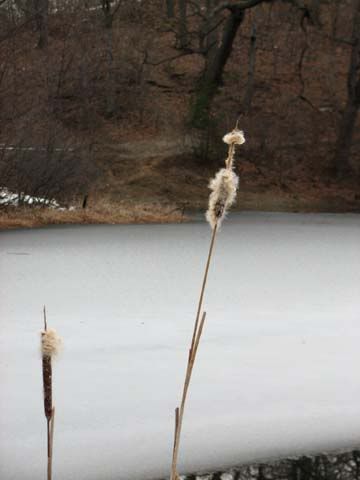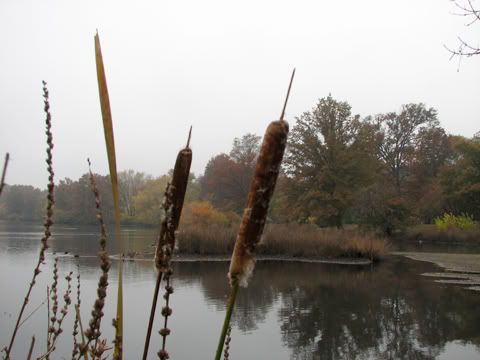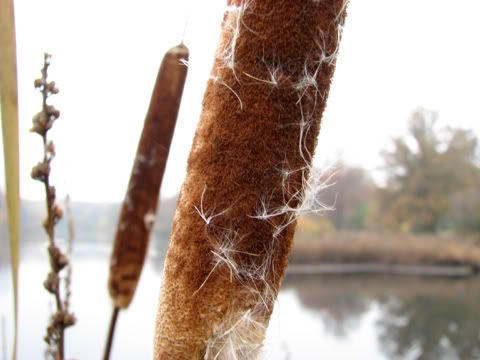365 Urban Species. #047: Cattail

Photographs by cottonmanifesto. Location: Ward's Pond, Olmsted Park, Boston.
Urban species #047: Cattail Typha latifolia
Cattail is a marsh plant equally at home in the shallow water around a pond or in a drainage ditch. In urban environments, it may play a major role in reducing water pollutants. In some places, however, cattail is seen as an undesirable weed, encouraged to grow by an excess of nutrients. In ecologically sensitive places like the everglades, cattail creates thickets that reduce biodiversity. In other places, cattail is hated because it harbors crop pests like blackbirds.
In Boston, one of the great values of cattail is that it provides habitat for red-winged blackbirds. Other birds, rare and diminishing species like bitterns and rails also favor cattail marsh. In the east, cattail is threatened by the encroachment of purple loosestrife. This attractive but invasive plant grows in the same kind of shallow waters as cattail, but does not provide habitat for birds or food for most native insects. Phragmites reeds can also outcompete cattail in urban areas.
Cattail has a long history of human use. Different parts of the plant are edible and available throughout the year. Flour can be obtained from the starchy rhizome. The downy seeds were formerly used as stuffing for life vests and pillows, and the seed heads can be dipped in tallow and used as torches. The long leaves can be woven into various crafts.

